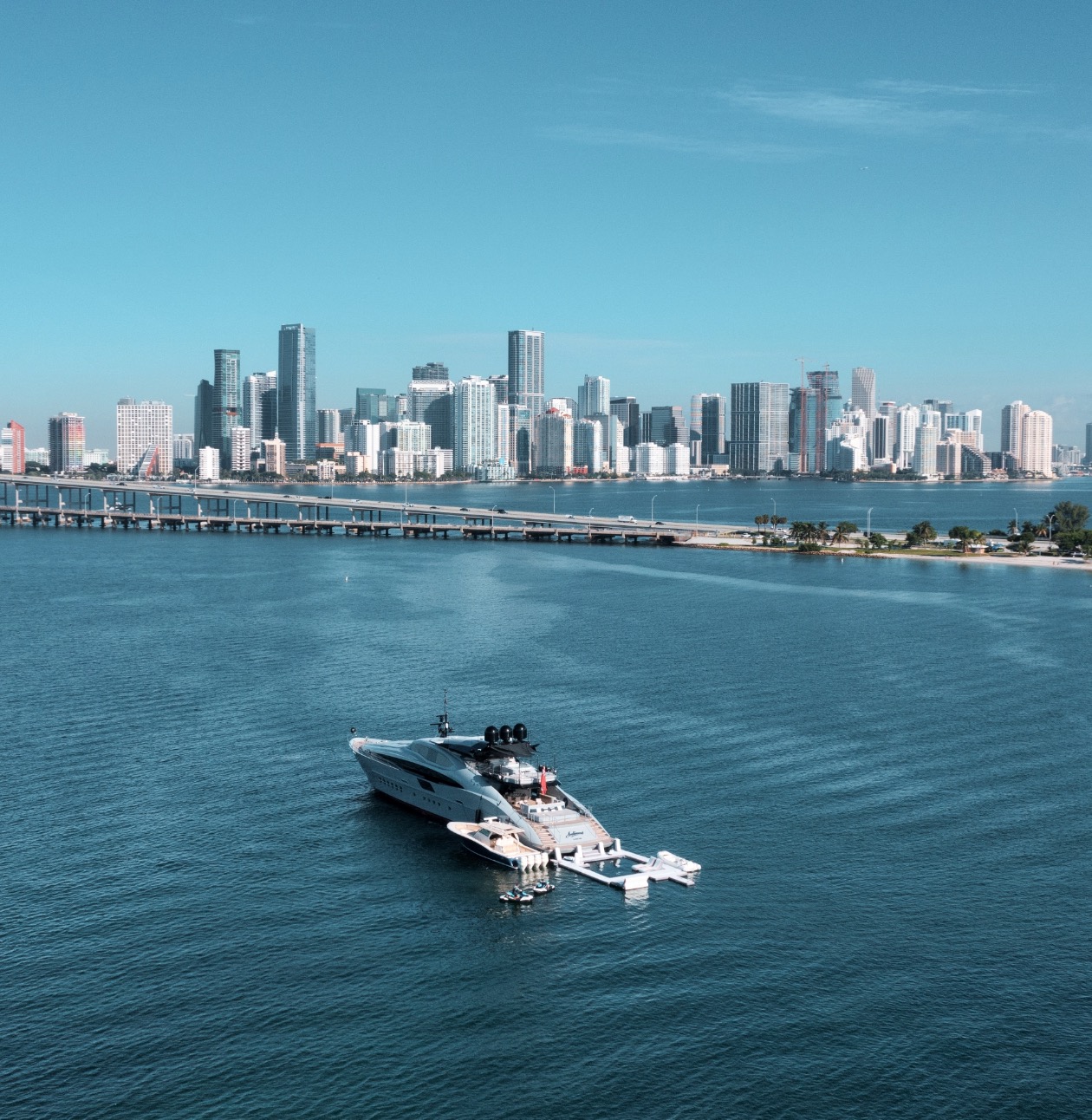
What to Know About Sea Trials (Before Buying or Selling a Yacht)

The “sea trials” definition is a simple one: it’s a test run performed in the water after a buyer submits an offer for the yacht owners’ consideration. Selling your yacht is often contingent on the survey and trial that takes place on the seas, making it a pivotal part of the yacht buying or yacht selling process.
Following sea trial procedure helps you fully experience all the nuances of the super yacht, motor yacht, or sailing yacht you’re interested in, while revealing any flaws or needed fixes that you should be aware of before the sale.
Pushing the yacht for sale to its limits isn’t the goal of a sea trial, but the experienced yacht broker, surveyors, captains, mechanics, or whoever else is present during the trial will be focused on replicating real-world conditions to test how the yacht truly fares on the water—so there are never any surprises down the road.
Sea Trials Test: Who Pays?
Traditionally, the buyer will be the one to foot the bill throughout the survey process, as well as during the collection and testing of fluid samples, inspection, haul out, and the completion of the final report.
However, it’s up to the seller to prime the vessel so it’s in a favorable condition when it hits the water for its trial.
As the seller, you’ll be responsible for making sure the boat is available and primed for its sea trial, as well as responsible for accepting any risks if something goes wrong while you’re out on the water. You should also expect to cover the cost of fuel (at least 1/4 tank minimum) and provide an operator for the vessel.
While this might seem like a lot of prep, all of this preparation will be worth it when your sea trial ends in a successful yacht sale.
To avoid a lot of the stress, getting the advice of an experienced yacht broker can help smooth the process (whether you’re the buyer or the seller) by helping you know what you should expect the day of, as well as what items on your sea trials checklist you should take care of ahead of time to make sure the sale is pushed through.
Sea Trials Checklist for the Seller (Before the Day Of)
Is your super yacht, motor yacht, or sailing yacht in the peak-performance condition you expect?
If it has been seldom used, has been sitting dockside for some time, or is rarely taken out on waters that test the vessel’s true capabilities—it might not be.
You can prepare for a successful trial as the seller by conducting a pre-test that clues you in to any issues that you should fix before your vessel is surveyed, inspected, and tested.

You should be confident that your vessel is up for the task of meeting the rated RPM on the water without overheating (because you can expect that to be tested during your trial), and you should have checked your boats from all angles to make sure that no props are nicked and that your bottom isn’t fouled.
To build up your confidence in your yacht’s condition and ensure a smooth trial, take a thorough look at your boat in the dock and in the truer conditions of open water.
Then check with your yacht broker to make sure that you’ve looked into everything that could be flagged the day of your sea trial, from the general condition of the boat to the smaller details like the tech and decor in your interior.
Sea Trial in Water: What Should I Expect?
Let’s start with what you shouldn’t expect—you shouldn’t expect the survey and sea trial process to be a quick in-out. The survey of your yacht is likely to be a half or all-day affair, and super yachts might involve multiple days of testing.
Your survey involves checking the boat over stem to stem, looking into every corner of the structure, inspecting underwater running gear, looking over all the fiberglass and lamination for any issues, and thoroughly checking the upkeep and capabilities of the yacht’s full systems.
This kind of thorough look into the condition of your yacht takes time, especially when your surveyor is documenting every detail.
And though the sea trial in water won’t take quite as long, expect the same thoroughness.
Your yacht will be tested at all RPM band ranges while inspectors check for vibrations, indications of overheating, or other concerns that show that your yacht isn’t in peak condition.
Of course, doing the prep work to ensure a successful sea trip is worth it.
At the end of the survey and sea trial process, the buyer will be given a detailed report that includes essential and non-essential repair recommendations.
With that knowledge in hand, the buyer either accepts the vessel as-is, decides not to move forward with the sale, or offers conditional acceptance with a list of requested repairs that it’s up to the seller to negotiate.
You can smooth out the sea trials process—and ensure a successful sale or purchase of your dream yacht—by working with a yacht broker with over two decades of experience facilitating deals for buyers and sellers. With a yacht broker by your side, you won’t have to wonder what the day of your sea trial will look like. Because you’ll have someone to be by your side at every step.
[Contact Your trusted yacht broker]
Request More Info
"*" indicates required fields
Share this with





